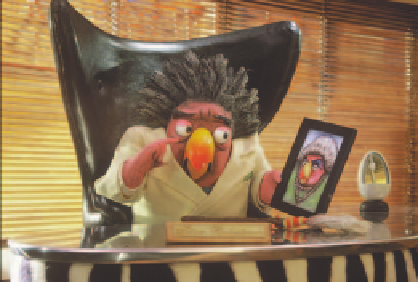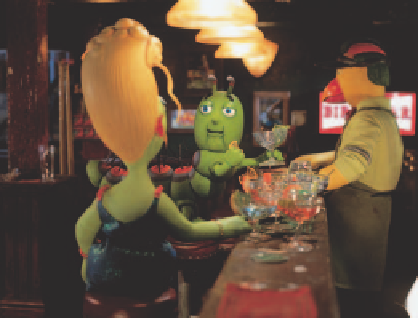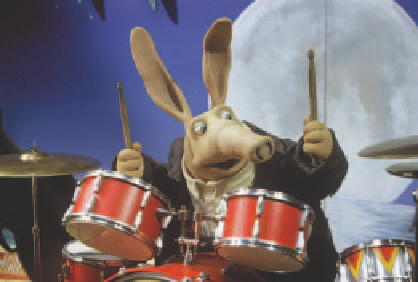Graphics Reference
In-Depth Information
but she seems to wet the eyes, making them alive. They are clearly focused but, rather than
looking static, there are the briefest of hints of movement, suggesting things going on inside
the head. Whole shots are constructed around the movement of the eyes. Once again, so much
is communicated through the eyes.
A trick I have used is having the blinks out of sync with each other. This can produce an
unsettling ef ect. A character in
Hamilton Mattress
, the egocentric Senor Balustrade, had such a
blink as one of his many signature moves, and it had the ef ect of making him look slightly out
of control and a little unpredictable. Even though they are just one frame dif erent, it's enough
to give the character oddness.
The lively eyes of the
Hamilton Mattress
characters: Senor Balustrade, Feldwick and Hamilton.
I am wary about overdoing the blinks. In most Disney i lms, the characters are given eyes that
are overemphasised in terms of proportion and activity, making the blinks a huge feature of the
animation, with the subsequent constant l uttering getting too cute. It's hard to get a balance.
Too much and the characters get annoying, too little and the faces become somewhat dead. The
physical purpose of a blink is to keep the eyes moist, but the brief closing of the eyes can also stop
the vision from getting too blurred in a swift movement of the head, like the black
frame in a strip of i lm. If it wasn't there, things would all melt into each other.
Another new development with dear Mr Toad was having mechanics under the
skin operated by turning a key inserted into the skull. At each side of his mouth,
Toad had a half ball shape that with a turning thread could raise or lower, giving
Toad a fantastic smile or a sulk … both of which he did aplenty. Initial designs for
the puppet had the keyhole carefully disguised in one of many of Toad's warts on





Search WWH ::

Custom Search